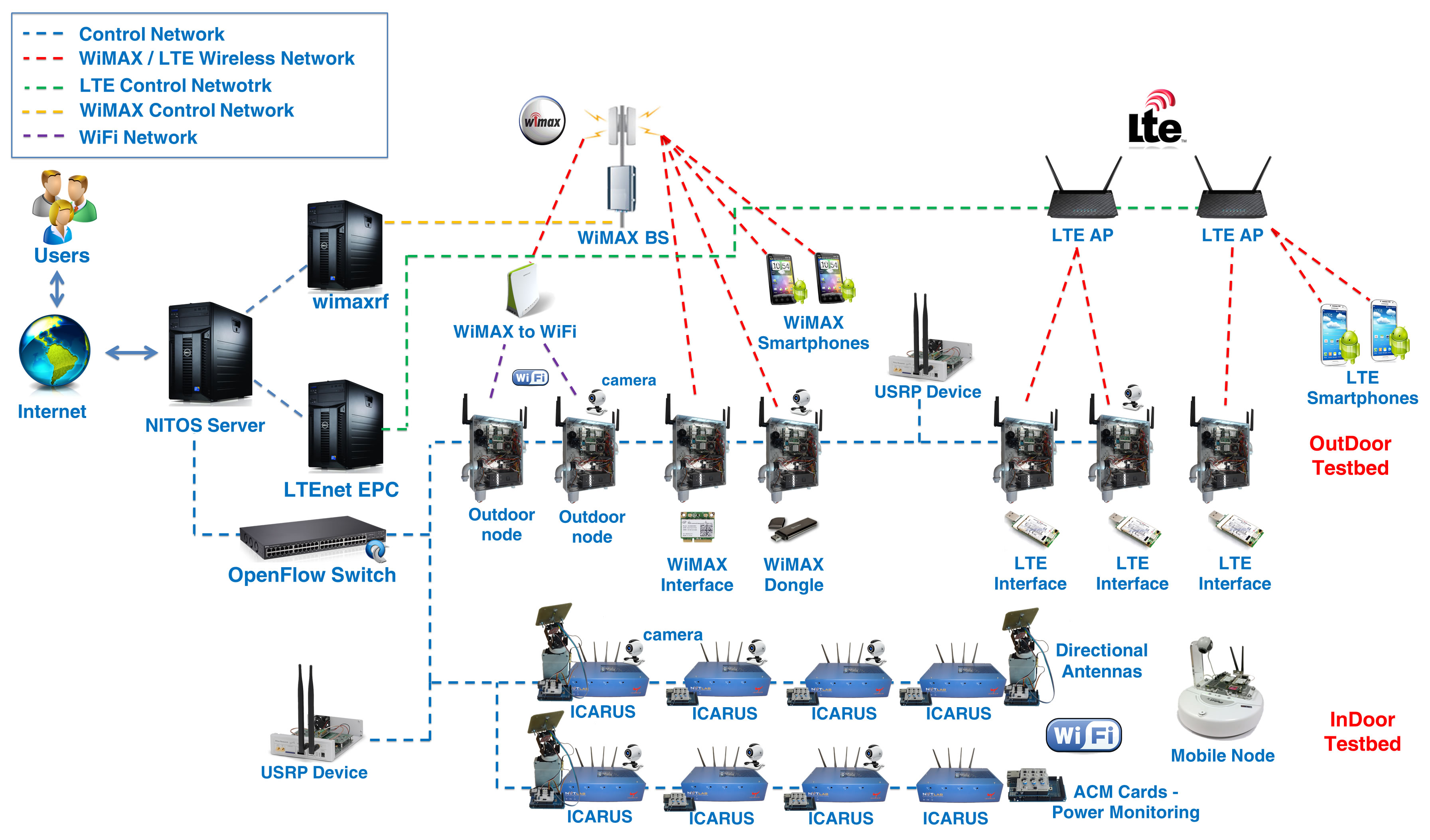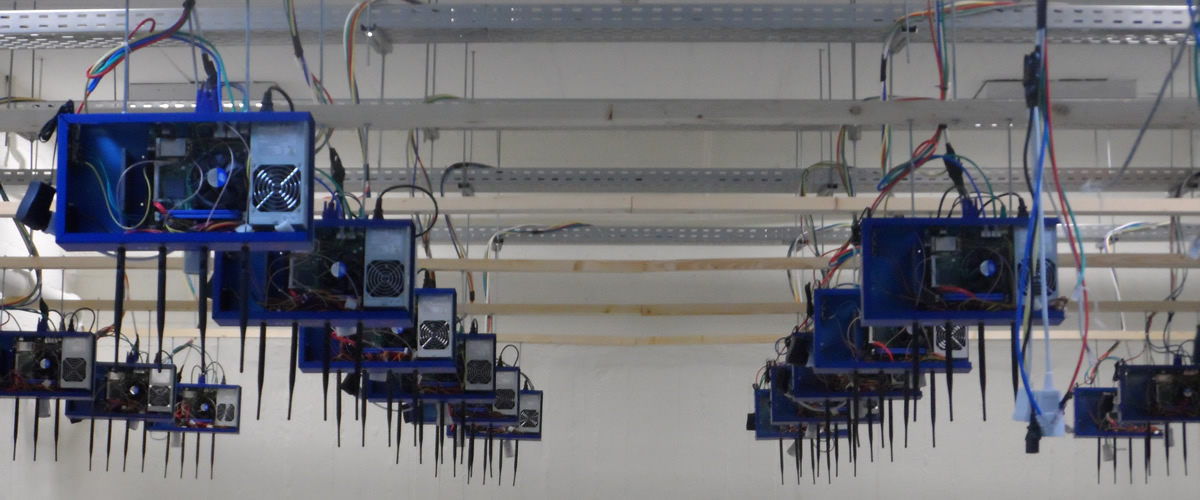The main experimental components of NITOS are:
- A wireless experimentation testbed, which consists of 100 powerful nodes (some of them mobile), that feature multiple wireless interfaces and allow for experimentation with heterogeneous (Wi-Fi, WiMAX, LTE, Bluetooth) wireless technologies.
- A Cloud infrastructure, which consists of 7 HP blade servers and 2 rack-mounted ones providing 272 CPU cores, 800 Gb of Ram and 22TB of storage capacity, in total. The network connectivity is established via the usage of an HP 5400 series modular Openflow switch, which provides 10Gb Ethernet connectivity amongst the cluster’s modules and 1Gb amongst the cluster and GEANT.
- A wireless sensor network testbed, consisting of a controllable testbed deployed in UTH’s offices, a city-scale sensor network deployed in Volos city and a city-scale mobile sensing infrastructure that relies on bicycles of volunteer users. All sensor platforms are custom, developed by UTH, supporting Arduino firmware and exploit several wireless technologies for communication (ZigBee, Wi-Fi, LTE, Bluetooth, IR).
- A Software Defined Radio (SDR) testbed that consists of Universal Software Radio Peripheral (USRP) devices attached to the NITOS wireless nodes. USRPs allow the researcher to program a number of physical layer features (e.g. modulation), thereby enabling dedicated PHY layer or cross-layer research.
- A Software Defined Networking (SDN) testbed that consists of multiple OpenFlow technology enabled switches, connected to the NITOS nodes, thus enabling experimentation with switching and routing networking protocols. Experimentation using the OpenFlow technology can be combined with the wireless networking one, hence enabling the construction of more heterogeneous experimental scenarios.
The testbed is based on open-source software that allows the design and implementation of new algorithms, enabling new functionalities on the existing hardware. The control and management of the testbed is done using the cOntrol and Management Framework (OMF) open-source software. NITOS supports evaluation of protocols and applications under real world settings and is also designed to achieve reproducibility of experimentation.






